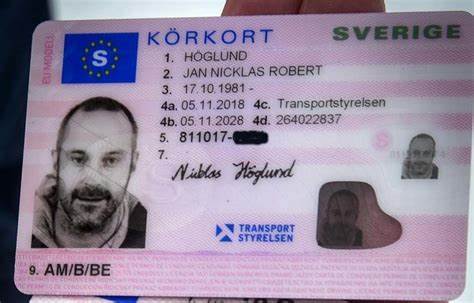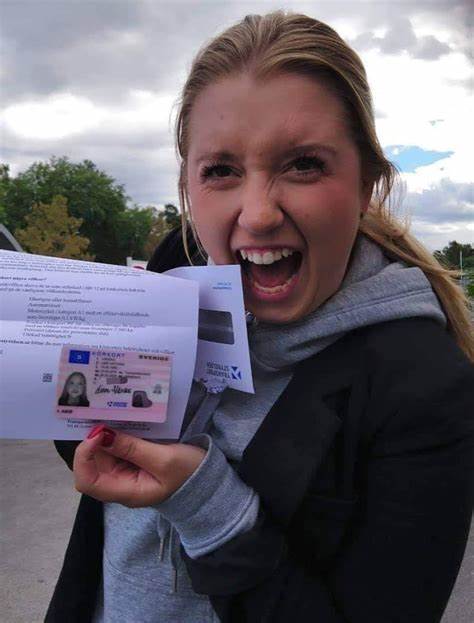15 Best Documentaries About Buy Driving License
페이지 정보

본문
The Comprehensive Guide to Legally Obtaining a Driving License
Driving is an essential skill for lots of, using the freedom to take a trip where and when you want, typically making life more hassle-free and enjoyable. Nevertheless, obtaining a driving license is a procedure that needs understanding, perseverance, and adherence to legal procedures. This guide intends to offer an in-depth summary of the steps one need to follow to legally get a driving license, highlighting crucial factors to consider and frequently asked concerns to guarantee a smooth and problem-free experience.

Understanding the Basics
Before diving into the application process, it's important to comprehend the basic requirements and kinds of driving licenses available. Driving laws differ substantially from country to country, and even within different states or provinces within the same country. Typically, there are a number of types of driving licenses, consisting of:
- Learner's Permit: This is often the primary step at the same time, permitting new drivers to gain experience under supervision.
- Provisional License: Issued after passing a fundamental driving test, this license typically includes constraints and is a stepping stone to a complete license.
- Complete Driver's License: Once all the necessary requirements are met, chauffeurs can get a complete license, which offers complete driving privileges.
- Commercial Driver's License (CDL): Required for those who wish to operate commercial lorries, such as trucks or buses.
Actions to Obtain a Driving License
1. Research Local Driving Laws
The primary step in acquiring a driving license is to investigate the specific requirements in your location. Visit the official website of your local Department of Motor Vehicles (DMV) or comparable agency to find in-depth information about the licensing process, consisting of age constraints, needed files, and charges.
2. Prepare Required Documentation
Each jurisdiction has its own set of files that need to be submitted to use for a driving license. Typically needed documents include:
- Proof of Identity: A passport, birth certificate, or state-issued ID.
- Evidence of Residency: Utility expenses, lease agreements, or other main documents that validate your address.
- Social Security Number (if appropriate): In some nations, a social security number or equivalent is needed for identification.
- Vision Test Results: Some places require a vision test before providing a student's permit or license.
3. Take a Driver's Education Course
Numerous states and nations require new drivers to finish a driver's education course. These courses are created to teach the guidelines of the road, traffic laws, and safe driving practices. They can be completed online or in a class setting and often include both theoretical and practical components.
4. Make an application for a Learner's Permit
Once the required paperwork is prepared and the driver's education course is completed, the next step is to make an application for a learner's license. This generally includes visiting the DMV or sending an application online. You will also need to pass a written test that covers traffic laws and driving understanding.
5. Practice Driving
With a student's license, you can start practicing driving under the supervision of a licensed adult. This is an essential action in building your confidence and skills behind the wheel. It's also important to get experience in numerous driving conditions, such as night driving, highway driving, and driving in inclement weather.
6. Schedule and Pass the Driving Test
After getting adequate driving experience, you can set up a driving test with the DMV. The test will assess your ability to securely run a car and follow traffic laws. You will require to bring an appropriately registered and guaranteed lorry to the test, and the inspector will assess your driving skills on an established path.
7. Obtain a Provisional License
If you pass the driving test, you will usually get a provisional license. This license may include constraints, such as a curfew or a limitation on the number of guests you can have in the car. These constraints are designed to lower the threat of mishaps and assist new chauffeurs adjust to the roadway.
8. Update to a Full License
As soon as you have actually held a provisionary license for the required duration and fulfilled any extra requirements, you can update to a complete driver's license. This process typically involves an easy application and might need a retest or extra documents.
Tips for a Successful Application
- Start Early: Begin the process as quickly as you satisfy the age requirement to offer yourself ample time to prepare.
- Stay Informed: Keep updated with any changes in driving laws or DMV treatments.
- Practice Regularly: Consistent practice is key to developing self-confidence and enhancing your driving abilities.
- Stay Calm During the Test: Anxiety can impact your performance, so take deep breaths and stay focused.
- Follow DMV Instructions: Pay attention to the directions provided by the DMV and the inspector throughout your test.
Regularly Asked Questions (FAQs)
Q: What is the minimum age to get a student's authorization?
A: The minimum age varies by jurisdiction. In the United States, it typically ranges from 15 to 16 years old. In the UK, the minimum age is 17. Examine your regional DMV site for particular details.
Q: Can I look for a driver's license online?
A: Some jurisdictions allow you to complete parts of the application process online, such as completing forms and scheduling tests. Nevertheless, you will usually need to go to a DMV office in individual to submit required files and take the driving test.
Q: What occurs if I stop working the driving test?
A: If you stop working the driving test, you can usually retake it after a certain duration. This period varies by location, however it is often a few weeks. It's an excellent concept to practice more before retaking the test to enhance your chances of success.
Q: Can I drive alone with a student's license?
A: No, a learner's license usually requires you to be accompanied by a certified adult, typically over 21 years of ages, who is seated in the front guest seat.
Q: Is a vision test needed to get a driving license?
A: Yes, the majority of jurisdictions require a vision test to guarantee that you can safely run a vehicle. You can normally take this test at the DMV or with an approved eye doctor.
Q: How long does it take to get a complete driver's license?
A: The time needed to acquire a full driver's license varies depending upon your jurisdiction and the specific actions involved. Typically, it can take numerous months, including the time required to finish a driver's education course, hold a student's authorization, and pass the driving test.
Q: Can I utilize a provisionary license to drive for work?
A: It depends upon the constraints put on your provisionary license. Some provisional licenses enable you to drive for work, while others might have particular constraints. Check your license for details or call the DMV for explanation.
Q: What is the difference between a learner's license and a provisionary license?
A: A student's license is the first stage of the licensing procedure and enables you to drive only under supervision. A provisional license, on the other hand, grants you more driving opportunities however may still have some restrictions, such as a curfew or passenger limits.
Q: Can I request an industrial driver's license (CDL) without a full driver's license?
A: No, you usually need a complete driver's license before applying for a CDL. A CDL is a specific license that needs additional training and testing, and it is just provided to those who have actually shown the ability to safely operate a basic automobile.
Q: What should I do if I lose my driving license?
A: If you lose your driving license, you need to report it to the DMV and make an application for a replacement. You might need to supply evidence of identity and pay a charge. It's also a great idea to alert your insurance provider and any other appropriate parties.
Obtaining a driving license is a considerable milestone that opens up new chances and increases self-reliance. By following the steps described in this guide and remaining notified about local laws and requirements, you can make sure a smoother and köp köRkort certifikat (http://139.199.168.247/) more effective licensing process. Keep in mind that driving is a serious obligation, and taking the time to discover and practice is vital for your safety and the security of others on the roadway.

- 이전글Why All The Fuss Over Running Machine UK? 25.06.15
- 다음글10 Top Facebook Pages Of All-Time About French Driving License Online 25.06.15
댓글목록
등록된 댓글이 없습니다.